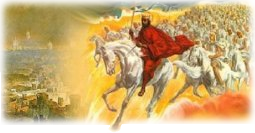 Merritt Cornell, the author of this book, was a Millerite minister who was converted to Sabbatarian Adventism by the influence of Joseph Bates. The EGW CD (in the Pioneer Authors section) states:
Merritt Cornell, the author of this book, was a Millerite minister who was converted to Sabbatarian Adventism by the influence of Joseph Bates. The EGW CD (in the Pioneer Authors section) states:
In 1855 on a committee with Bates and J. H. Waggoner he contributed to a report on spiritual gifts given to the 1855 conference in Battle Creek that proved to be a milestone in the acceptance of Ellen White’s prophetic gift.
In the religious world at that time, many of the traditional churches held to the idea that supernatural spiritual gifts ended with the death of the apostles. However, some of the Advent people, who in their study of the book of Daniel and Revelation, saw many lines of truth that indicated a return of the church to the condition and power of the early church, were open to the idea of spiritual gifts.
As early as 1830, British Adventist, Edward Irving, in his publication The Church with Her Endowment of Holiness and Power had advocated a return of the spiritual gifts to the church. The American Adventists tended to be less enthusiastic, possibly because of their experiences with extremists, and after the Great Disappointment in 1844, the Albany conference of Adventists in 1845 made a definite statement of suspicion towards spiritual gifts:
Resolved, That we have no confidence in any new messages, visions, dreams, tongues, miracles, extraordinary gifts, revelations, impressions, discerning of spirits, or teachings, &c &c., not in accordance with the unadulterated word of God.
Naturally, who would want a message “not in accord with the unadulterated word of God”? But this rule tended to cast all supernatural manifestations in a suspicious category. By the time the Albany conference made that resolve, a young Adventist lady named Ellen White had already been gifted with the “spirit of prophecy,” in the form of visions.
So Cornell (with the help of a lengthy Introduction by James White) wrote this book, in order to show that spiritual gifts were not only promised to the church until the work of the gospel would close, but were actually experienced by the church throughout the Christian era, to a greater or less degree. Therefore the majority of the book is devoted to listing experiences of spiritual gifts recorded from church history.
In our day, with the rise of Pentecostalism and their claims to spiritual gifts, there is less resistance to them as when this book was written. But this also lays upon us a greater burden to discern between the counterfeit manifestations of the gifts, and the true. The false will become even more prevalent as the closing battle draws near, wherein the “spirits of devils” will “work miracles.” Revelation 16:14. 147p
Note: this book has been updated, and as of September 2024 is now based off the later “Second Edition Revised,” released in 1875. I’ve also included any material from the original publication (from 1862) that was left out of the second edition.
Contents
- Introduction (by James White)
- Scripture Testimony
- Testimony of Eminent Men
- History of Miraculous Powers
- Miracles of the Martyrs and Others
- Prophesying
- Dreams
- Visions
- Healing the Sick
- Discerning Spirits
- Expelling Evil Spirits
- Awful Judgments for Lying
- Miraculous Power in Preaching
- Miscellaneous Incidents



